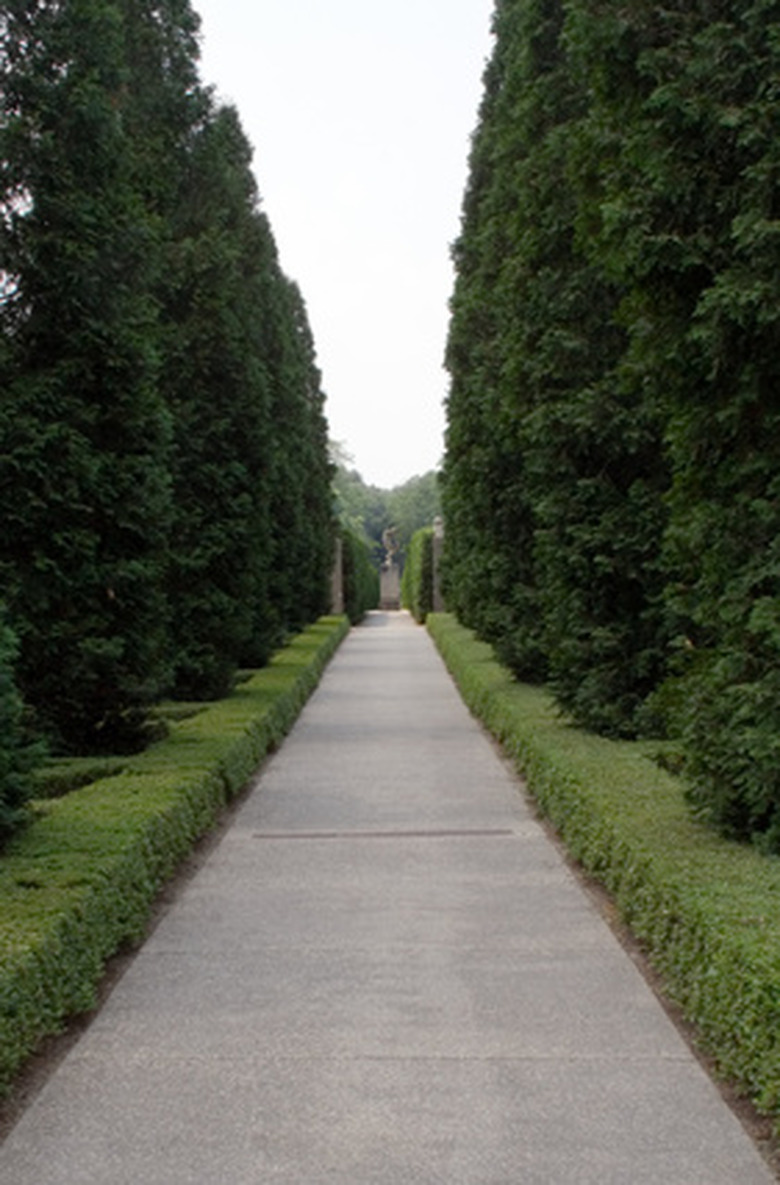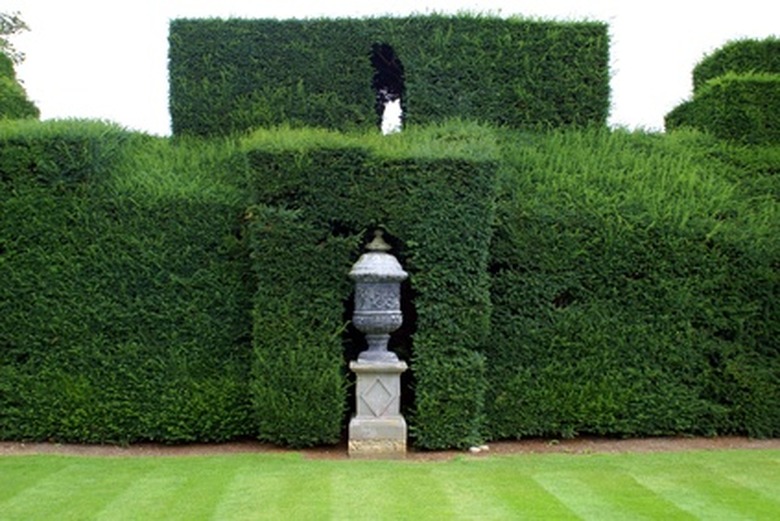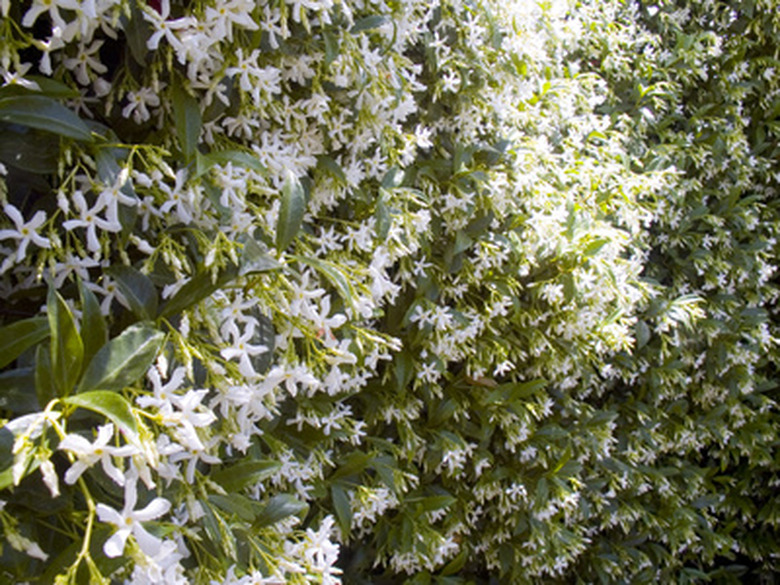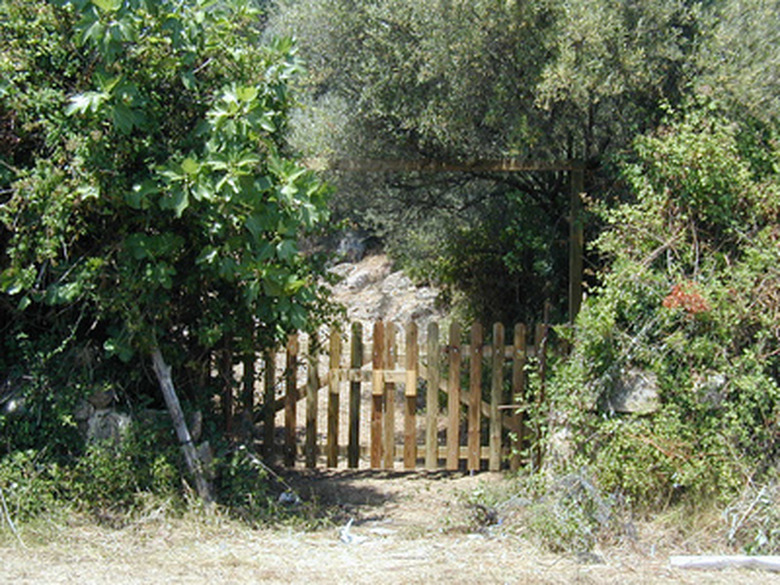The Best Privacy Plants For Central Florida
Shrubs and vines make excellent privacy barriers. Not only do they add visual interest to your yard, but they also muffle sound and serve as a windbreak. When selecting a privacy plant, choose one that complements your existing landscaping. If you have a formally landscaped yard with trimmed lawn and flower beds, then select a formal style hedge. A casual landscape lends itself to stepping outside the box with vines. To achieve a more natural look, go with native plants.
Traditional
A formal, clipped hedge often serves as a privacy barrier between manicured lawns. Three top choices for Central Florida are podocarpus, sweet viburnum and Japanese privet.
- Shrubs and vines make excellent privacy barriers.
- When selecting a privacy plant, choose one that complements your existing landscaping.
Podocarpus grows as large as 40 feet high by 25 feet wide, but is more commonly seen as a hedge or as clipped to a shrub-sized specimen. Podocarpus is drought and salt tolerant and generally pest and disease free.
Sweet viburnum grows as large as 30 feet high by 25 feet wide. Viburnum is drought tolerant, but only moderately salt tolerant. Although generally pest free, viburnum can be susceptible to some mild plant diseases such as bacterial leaf spot.
Japanese privet, Ligustrum japonicum, reaches 12 feet high by 25 feet wide and is salt tolerant, but only moderately drought tolerant. Japanese privet is fairly disease and pest resistant.
- Podocarpus grows as large as 40 feet high by 25 feet wide, but is more commonly seen as a hedge or as clipped to a shrub-sized specimen.
- Japanese privet, Ligustrum japonicum, reaches 12 feet high by 25 feet wide and is salt tolerant, but only moderately drought tolerant.
Getting Creative With Vines
Vines make creative, attractive alternatives to formal hedges. Best used to cover fencing between yards, vines can be fragrant and attract wildlife. Two good choices are confederate jasmine and cape honeysuckle.
Confederate jasmine produces an abundance of fragrant, white flowers during spring and forms a dense, evergreen covering over a fence.
Cape honeysuckle produces hummingbird attracting orange-red flowers from spring through winter. Cape honeysuckle also works as a freestanding shrub.
Go Native
Always an ecologically sound choice, using native plants as a privacy hedge provides a low maintenance, natural alternative to formal plantings. Sharon Dolan, a master gardener at Maple Street Natives in Melbourne, Florida, believes that "diversity is best." Dolan suggests mixing several plants to make a privacy barrier including Walter viburnum, red and Spanish stoppers, southern wax myrtle and bay cedar.
- Vines make creative, attractive alternatives to formal hedges.
- Dolan suggests mixing several plants to make a privacy barrier including Walter viburnum, red and Spanish stoppers, southern wax myrtle and bay cedar.
Walter viburnum reaches 25 feet high by 10 feet wide and attracts birds and butterflies. Walter viburnum prefers partial shade and has a high drought tolerance but a low salt tolerance.
Native stoppers include the red stopper, which reaches 30 feet high by 25 feet wide, and Spanish stopper, which reaches 15 feet high by about 15 feet wide. Both attract birds. Stoppers are drought and salt tolerant and relatively disease and pest resistant.
Southern wax myrtle reaches 30 feet high and thrives in full sun to partial shade.
With a spread of just 5 to 8 feet, the bay cedar reaches a height up to 20 feet and its dense foliage creates a great privacy hedge. The bay cedar also attracts butterflies.
- Walter viburnum reaches 25 feet high by 10 feet wide and attracts birds and butterflies.
- Southern wax myrtle reaches 30 feet high and thrives in full sun to partial shade.
References
- Sharon Dolan; Master Gardener; Maple Street Natives; Melbourne, Florida



